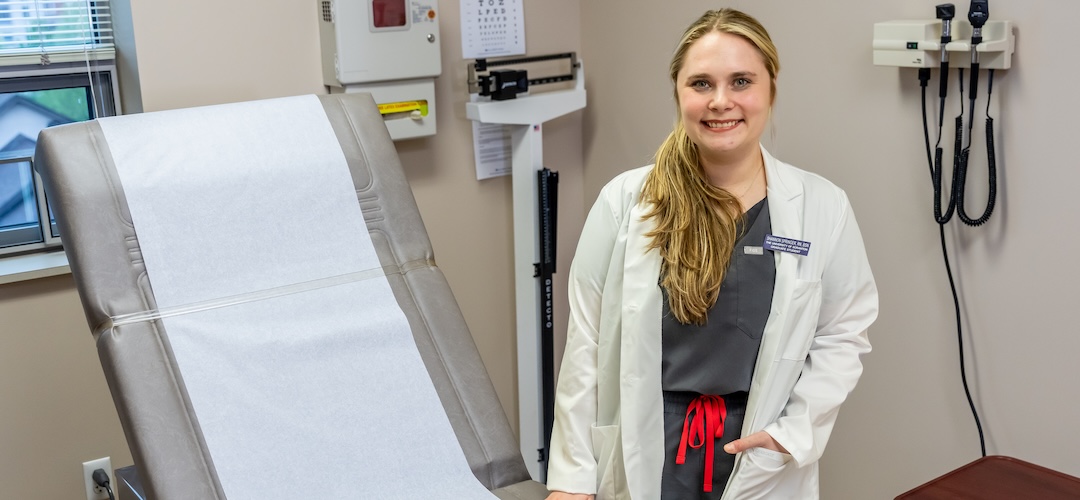How Family Nurse Practitioners Improve Access to Primary Care in Underserved Communities

Access to quality healthcare should not depend on your zip code, but for millions of Americans, that’s still the reality. Medically underserved populations across the United States face daily challenges in finding timely and affordable healthcare. In remote towns and in inner-city neighborhoods, patients struggle with travel distances, long wait times and limited provider availability.
Family nurse practitioners (FNPs) are helping to close this gap. By serving in primary care roles, nurse practitioners in rural areas and underserved communities are transforming healthcare delivery. In this article, we’ll explore how FNPs improve healthcare access, promote health equity and lead change in areas where it’s needed most.
Why Do Certain Communities Lack Access to Primary Care Providers?
Across the United States, more than 75 million people live in Health Professional Shortage Areas (HPSAs), regions where the number of providers is not enough to meet the population’s needs. These include:- Rural towns with limited medical facilities
- Urban areas with underfunded clinics
- Indigenous communities and remote tribal lands
Key causes of primary care access issues include:
- A growing physician shortage, especially in family medicine
- High turnover rates and burnout among providers
- Poor healthcare infrastructure
- Economic hardships for patients
These barriers to care in shortage areas can be further compounded by geographic isolation and transportation challenges.
The issue is particularly devastating for medically underserved populations. According to the Rural Health Information Hub, people in this demographic often face higher rates of chronic disease like diabetes, hypertension and asthma -- all of which require continuous care. In Health Professional Shortage Areas, the lack of healthcare access leads to delays in diagnosis and treatment, inadequate disease management, and fewer preventive care services.
Addressing such problems requires a workforce that is both skilled and willing to serve in these high-need areas. That’s where nurse practitioners in rural areas come in.
How Do Family Nurse Practitioners Help Bridge Gaps in Healthcare Access?
This is where FNPs and health equity intersect. Family nurse practitioners are trained to provide full-spectrum primary care for patients across the lifespan. In many states, they can practice independently without physician oversight – a significant advantage in underserved areas with few primary care physicians.
Here’s how FNPs improve healthcare access:
- Expanded reach: FNPs serve as primary care providers in clinics, schools, mobile health units and telehealth platforms — especially in hard-to-reach areas.
- Culturally competent care: Many FNPs live and work in the communities they serve, offering personalized, community-based healthcare.
- Focus on prevention: FNPs emphasize chronic disease prevention in low-access regions by screening, educating and managing risk factors early.
- Lower costs: FNP-led care is often more affordable, reducing reliance on expensive emergency care and hospitalization.
Where Are FNPs Needed Most in the United States?
The need for nurse practitioners in rural areas is particularly acute in:
- Appalachian states like Tennessee, West Virginia and Kentucky
- Inner-city neighborhoods lacking accessible clinics
- Southern regions with high poverty and uninsured rates
- Native American reservations where care is often delayed or unavailable
Elevate Your Expertise
Unlock new opportunities and expand your skills with an education designed for your future. Get started today!
Request InformationWhat Are the Benefits of FNP-Led Care for Underserved Populations?
The presence of family nurse practitioners in rural areas benefits patients in multiple ways. They develop long-term relationships with patients and their families, which improves the continuity of care. FNPs help patients manage conditions before they become emergencies, and nurse-led initiatives in health promotion and preventive care help improve patients’ health and lifestyle habits.What Policy Changes Support FNP Practice in Shortage Areas?
Supportive policies are needed to help FNPs do more to improve health equity.
Key initiatives and recommendations include:
- Student Loan Repayment Programs – Offering debt relief for FNPS working in communities in need.
- Full practice authority – granting FNPS the ability to practice independently in all 50 states.
- Parity in Medicaid / Medicare reimbursement – Ensuring FNPs receive equal reimbursement for services comparable to those provided by physicians.
- Expanding nurse practitioner education, particularly for primary care in underserved areas.
Why Choose an FNP Career Path?
Family nurse practitioners are essential healthcare providers for medically underserved populations. Working as an FNP in shortage areas can be a rewarding, mission-driven career path.
Whether you envision running a mobile clinic, seeing patients in a rural practice, or managing a telehealth program, the role offers the opportunity to transform lives and communities. By choosing this path, you’re not just advancing your own career. You’re helping to redefine what accessible, equitable healthcare can look like.
Interested in becoming a family nurse practitioner and serving where you’re needed most? The University of Scranton offers a 36-credit family nurse practitioner master’s degree that can be completed in 21 months of full-time study. Explore our program and discover how you can be part of the solution.
Take the Next Step
Your goals are within reach. Now is the time to make your next move and turn ambition into achievement.
Request More Information
Whether you're curious about The University of Scranton application process, admission requirements, tuition and financial aid, or specific program details, we're here to help.
Fill out this form, and we'll be in touch shortly.
By submitting this form, I am providing my express consent authorizing The University of Scranton and their representatives to contact me by email, phone, or text (including use of automatic dialing system) at the home or cell phone number above. Consent is needed to contact you but is not a requirement to register or enroll. Standard text messaging and/or data rates may apply.


